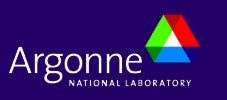Selected ATcT [1, 2] enthalpy of formation based on version 1.122q of the Thermochemical Network [3] This version of ATcT results was generated from an expansion of version 1.122p [4] to include an updated enthalpy of formation for oxalic acid. [5] and additional high-level computations on methyl peroxy radical [6].
|
| Species Name |
Formula |
Image |
ΔfH°(0 K) |
ΔfH°(298.15 K) |
Uncertainty |
Units |
Relative
Molecular
Mass |
ATcT ID |
| Hydrogen cyanide | HCN (g) |  | 129.660 | 129.276 | ± 0.090 | kJ/mol | 27.02538 ±
0.00081 | 74-90-8*0 |
| Representative Geometry of HCN (g) |
| | | spin ON spin OFF | | | Top contributors to the provenance of ΔfH° of HCN (g)The 20 contributors listed below account only for 37.2% of the provenance of ΔfH° of HCN (g).
A total of 308 contributors would be needed to account for 90% of the provenance.
Please note: The list is limited to 20 most important contributors or, if less, a number sufficient to account for 90% of the provenance. The Reference acts as a further link to the relevant references and notes for the measurement. The Measured Quantity is normaly given in the original units; in cases where we have reinterpreted the original measurement, the listed value may differ from that given by the authors. The quoted uncertainty is the a priori uncertainty used as input when constructing the initial Thermochemical Network, and corresponds either to the value proposed by the original authors or to our estimate; if an additional multiplier is given in parentheses immediately after the prior uncertainty, it corresponds to the factor by which the prior uncertainty needed to be multiplied during the ATcT analysis in order to make that particular measurement consistent with the prevailing knowledge contained in the Thermochemical Network.
|
| Top 10 species with enthalpies of formation correlated to the ΔfH° of HCN (g) | Please note: The correlation coefficients are obtained by renormalizing the off-diagonal elements of the covariance matrix by the corresponding variances.
The correlation coefficient is a number from -1 to 1, with 1 representing perfectly correlated species, -1 representing perfectly anti-correlated species, and 0 representing perfectly uncorrelated species.
| Correlation
Coefficent
(%) | Species Name | Formula | Image | ΔfH°(0 K) | ΔfH°(298.15 K) | Uncertainty | Units | Relative
Molecular
Mass | ATcT ID | | 99.8 | Hydrogen cyanide anion | [HCN]- (g) | ![[CH-]#N](../images/1697.png) | 129.509 | 129.030 | ± 0.090 | kJ/mol | 27.02593 ±
0.00081 | 12334-27-9*0 | | 95.2 | Cyanide | [CN]- (g) | ![[C-]#N](../images/185.png) | 63.956 | 67.242 | ± 0.094 | kJ/mol | 26.01799 ±
0.00080 | 57-12-5*0 | | 49.4 | Acetylene | HCCH (g) |  | 228.82 | 228.26 | ± 0.13 | kJ/mol | 26.0373 ±
0.0016 | 74-86-2*0 | | 49.4 | Acetylene cation | [HCCH]+ (g) | ![C#[CH+]](../images/513.png) | 1328.83 | 1328.17 | ± 0.13 | kJ/mol | 26.0367 ±
0.0016 | 25641-79-6*0 | | 48.8 | Nitrilomethyl | CN (g) | ![[C]#N](../images/76.png) | 436.75 | 440.04 | ± 0.14 | kJ/mol | 26.01744 ±
0.00080 | 2074-87-5*0 | | 44.8 | Hydrogen cyanide cation | [HCN]+ (g) | ![[CH+]#N](../images/847.png) | 1442.52 | 1442.05 | ± 0.20 | kJ/mol | 27.02483 ±
0.00081 | 12601-62-6*0 | | 40.7 | Ethynyl | CCH (g) | ![[CH][C]](../images/167.png) | 563.87 | 567.98 | ± 0.14 | kJ/mol | 25.0293 ±
0.0016 | 2122-48-7*0 | | 40.0 | Ethynylium | [CCH]+ (g) | ![[CH][C+]](../images/386.png) | 1687.58 | 1690.91 | ± 0.16 | kJ/mol | 25.0288 ±
0.0016 | 16456-59-0*0 | | 37.7 | Carbon atom | C (g) | ![[C]](../images/17.png) | 711.397 | 716.882 | ± 0.047 | kJ/mol | 12.01070 ±
0.00080 | 7440-44-0*0 | | 37.7 | Carbon atom | C (g, triplet) | ![[C]](../images/1107.png) | 711.397 | 716.882 | ± 0.047 | kJ/mol | 12.01070 ±
0.00080 | 7440-44-0*1 |
| Most Influential reactions involving HCN (g)Please note: The list, which is based on a hat (projection) matrix analysis, is limited to no more than 20 largest influences.
| Influence
Coefficient | TN
ID | Reaction | Measured Quantity | Reference | | 0.845 | 2293.4 | HCN (g) → [HCN]+ (g) | ΔrH°(0 K) = 13.607 ± 0.002 eV | Fridh 1975 | | 0.731 | 2294.2 | [HCN]- (g) → HCN (g) | ΔrH°(0 K) = 0.001565 ± 0.00005 eV | Ard 2009, est unc | | 0.632 | 2383.3 | HCN (g) → H+ (g) + [CN]- (g) | ΔrH°(0 K) = 122246 ± 3 cm-1 | Suits 2006, Hu 2005 | | 0.407 | 2301.1 | HCN (g) + [CH2OH]+ (g) → [HCNH]+ (g) + CH2O (g) | ΔrG°(300 K) = 0.5 ± 0.5 kcal/mol | Wolf 1977, est unc | | 0.355 | 2383.2 | HCN (g) → H+ (g) + [CN]- (g) | ΔrH°(0 K) = 122244 ± 4 cm-1 | Hu 2006 | | 0.282 | 2320.10 | HCN (g) → HNC (g) | ΔrH°(0 K) = 5236 ± 50 cm-1 | Nguyen 2015c | | 0.220 | 4243.6 | NCN (g) + 2 HCCH (g) → HCCCH (g) + 2 HCN (g) | ΔrH°(0 K) = -25.40 ± 0.4 kcal/mol | Klippenstein 2014, Klippenstein 2017 | | 0.182 | 2294.4 | [HCN]- (g) → HCN (g) | ΔrH°(0 K) = 0.0015601 ± 0.0001 eV | Garrett 2010, est unc | | 0.179 | 5971.6 | NCNNN (g) + H2 (g) → HNNN (g) + HCN (g) | ΔrH°(0 K) = -18.3 ± 1.0 kcal/mol | Pfeifle 2017, est unc | | 0.163 | 2399.9 | FCN (g) + CH4 (g) → HCN (g) + CH3F (g) | ΔrH°(0 K) = -40.3 ± 1.7 kJ/mol | Klopper 2010a | | 0.135 | 2354.8 | CH3NC (g) + HCN (g) → CH3CN (g) + HNC (g) | ΔrH°(0 K) = -40.97 ± 1.5 kJ/mol | Klippenstein 2017 | | 0.135 | 2354.7 | CH3NC (g) + HCN (g) → CH3CN (g) + HNC (g) | ΔrH°(0 K) = -40.9 ± 1.5 kJ/mol | Vogiatzis 2014, est unc | | 0.124 | 5971.5 | NCNNN (g) + H2 (g) → HNNN (g) + HCN (g) | ΔrH°(0 K) = -18.88 ± 1.2 kcal/mol | Ruscic W1RO | | 0.110 | 5785.5 | HCCCN (g) + [CN]- (g) → HCN (g) + [CCCN]- (g) | ΔrH°(0 K) = -1.39 ± 0.80 kcal/mol | Ruscic W1RO | | 0.106 | 5971.2 | NCNNN (g) + H2 (g) → HNNN (g) + HCN (g) | ΔrH°(0 K) = -17.78 ± 1.3 kcal/mol | Ruscic G4 | | 0.106 | 5971.4 | NCNNN (g) + H2 (g) → HNNN (g) + HCN (g) | ΔrH°(0 K) = -17.87 ± 1.3 kcal/mol | Ruscic CBS-n | | 0.105 | 4270.1 | HCNN (g) → HCN (g) + N (g) | ΔrH°(0 K) = 30.51 ± 1.1 kcal/mol | Harding 2008a, est unc | | 0.105 | 4277.1 | HNNC (g) → HCN (g) + N (g) | ΔrH°(0 K) = 25.85 ± 1.1 kcal/mol | Harding 2008a, est unc | | 0.101 | 2312.12 | 2 HCN (g) → NCCN (g) + H2 (g) | ΔrH°(0 K) = 11.51 ± 0.30 kcal/mol | Martin 2006, Karton 2006 | | 0.098 | 4056.5 | [CH3C(O)O]- (g) + HCN (g) → CH3C(O)OH (g, syn) + [CN]- (g) | ΔrH°(0 K) = 2.76 ± 0.8 kcal/mol | Ruscic W1RO |
|
|
|
References
|
|
1
|
|
B. Ruscic, R. E. Pinzon, M. L. Morton, G. von Laszewski, S. Bittner, S. G. Nijsure, K. A. Amin, M. Minkoff, and A. F. Wagner,
Introduction to Active Thermochemical Tables: Several "Key" Enthalpies of Formation Revisited.
J. Phys. Chem. A 108, 9979-9997 (2004)
[DOI: 10.1021/jp047912y]
|
|
2
|
|
B. Ruscic, R. E. Pinzon, G. von Laszewski, D. Kodeboyina, A. Burcat, D. Leahy, D. Montoya, and A. F. Wagner,
Active Thermochemical Tables: Thermochemistry for the 21st Century.
J. Phys. Conf. Ser. 16, 561-570 (2005)
[DOI: 10.1088/1742-6596/16/1/078]
|
|
3
|
|
B. Ruscic and D. H. Bross,
Active Thermochemical Tables (ATcT) values based on ver. 1.122q of the Thermochemical Network, Argonne National Laboratory, Lemont, Illinois 2021 [DOI: 10.17038/1821118]; available at ATcT.anl.gov |
|
4
|
|
D. Feller, D. H. Bross, and B. Ruscic,
Enthalpy of Formation of N2H4 (Hydrazine) Revisited.
J. Phys. Chem. A 121, 6187-6198 (2017)
[DOI: 10.1021/acs.jpca.7b06017]
|
|
5
|
|
D. Feller, D. H. Bross, and B. Ruscic,
Enthalpy of Formation of C2H2O4 (Oxalic Acid) from High-Level Calculations and the Active Thermochemical Tables Approach.
J. Phys. Chem. A 123, 3481-3496 (2019)
[DOI: 10.1021/acs.jpca.8b12329]
|
|
6
|
|
B. K. Welch, R. Dawes, D. H. Bross, and B. Ruscic,
An Automated Thermochemistry Protocol Based on Explicitly Correlated Coupled-Cluster Theory: The Methyl and Ethyl Peroxy Families.
J. Phys. Chem. A 123, 5673-5682 (2019)
[DOI: 10.1021/acs.jpca.8b12329]
|
|
7
|
|
B. Ruscic,
Uncertainty Quantification in Thermochemistry, Benchmarking Electronic Structure Computations, and Active Thermochemical Tables.
Int. J. Quantum Chem. 114, 1097-1101 (2014)
[DOI: 10.1002/qua.24605]
|
|
|
|
Formula
|
|
The aggregate state is given in parentheses following the formula, such as: g - gas-phase, cr - crystal, l - liquid, etc.
|
|
|
Uncertainties
|
The listed uncertainties correspond to estimated 95% confidence limits, as customary in thermochemistry (see, for example, Ruscic [7]).
Note that an uncertainty of ± 0.000 kJ/mol indicates that the estimated uncertainty is < ± 0.0005 kJ/mol.
|
|
|
Website Functionality Credits
|
The reorganization of the website was developed and implemented by David H. Bross (ANL).
The find function is based on the complete Species Dictionary entries for the appropriate version of the ATcT TN.
The molecule images are rendered by Indigo-depict.
The XYZ renderings are based on Jmol: an open-source Java viewer for chemical structures in 3D. http://www.jmol.org/.
|
|
|
Acknowledgement
|
|
This work was supported by the U.S. Department of Energy, Office of Science, Office of Basic Energy Sciences, Division of Chemical Sciences, Geosciences and Biosciences under Contract No. DE-AC02-06CH11357.
|
|
Page generated: 04/09/2025
|







